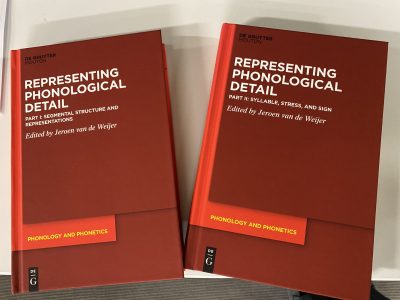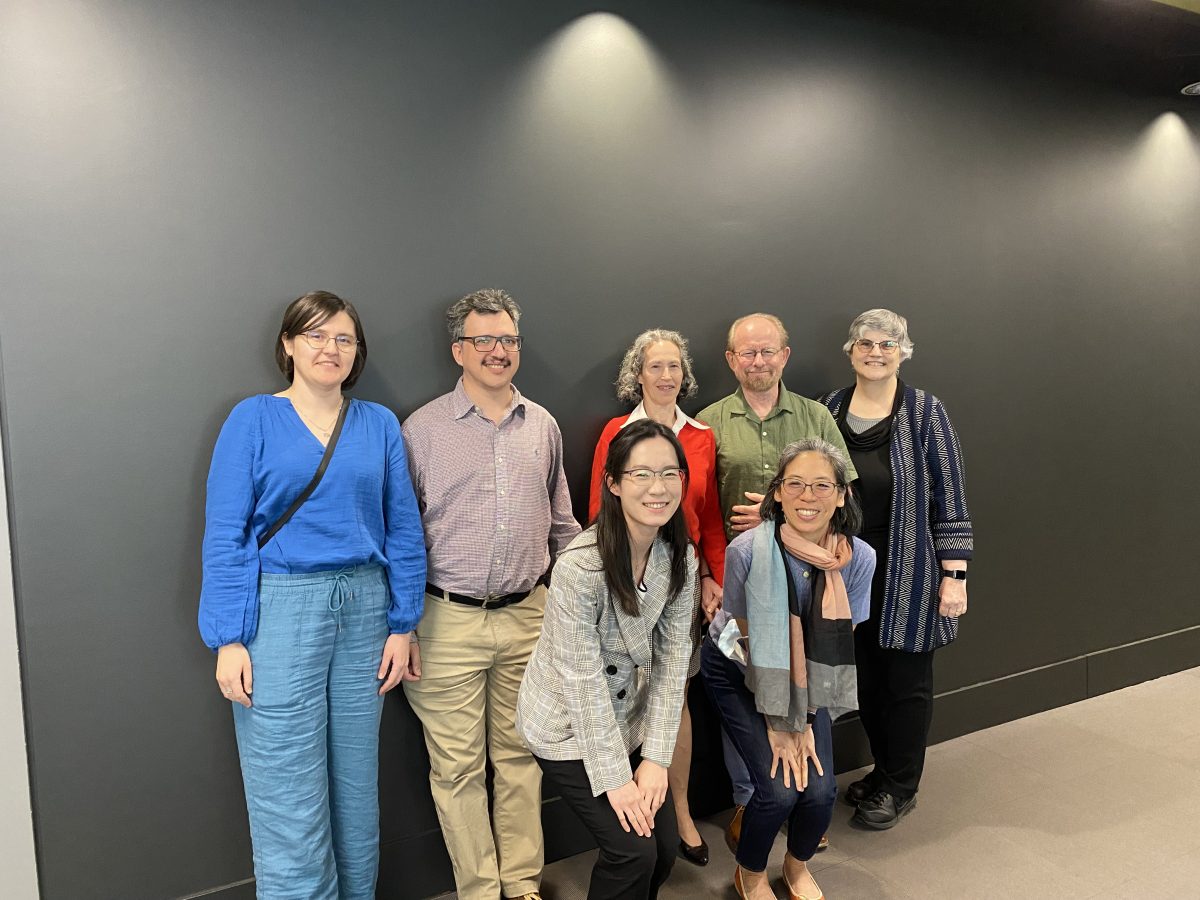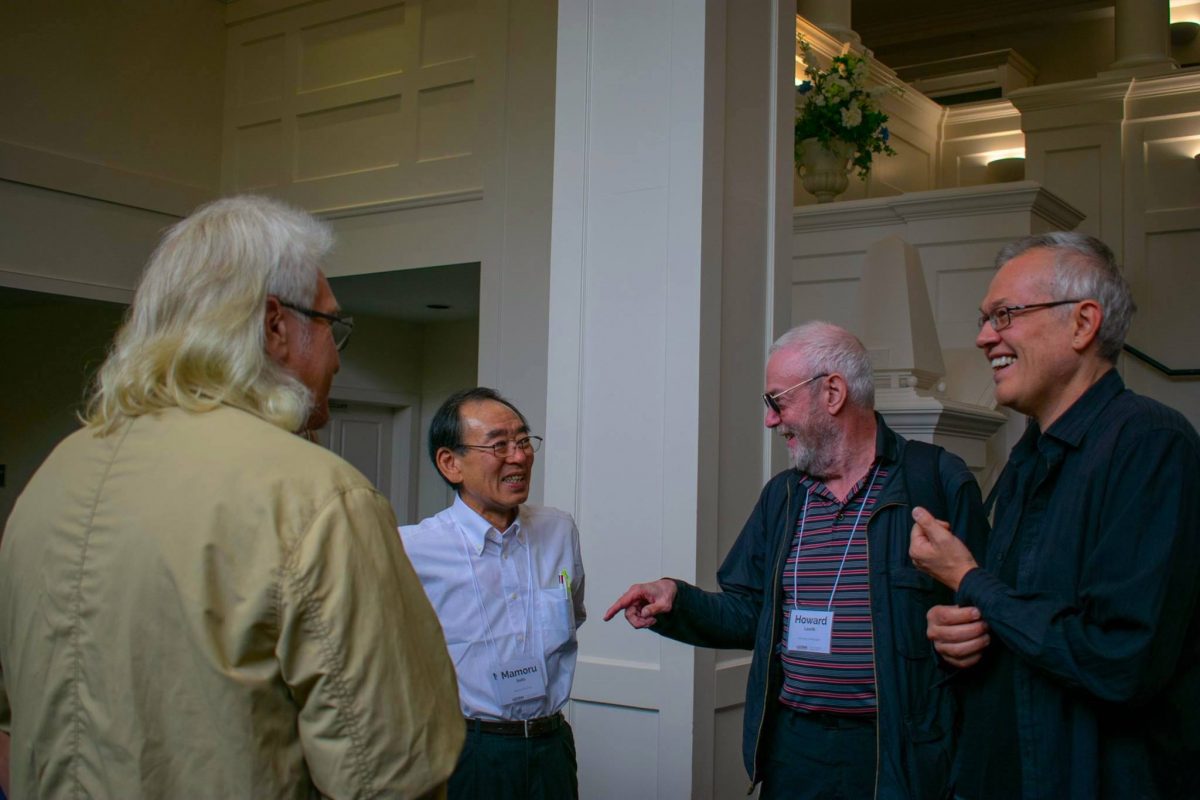Hiroaki Saito, who recently graduated from our program, has began his tenure-track job at the Faculty of Humanities, Law and Economics, Mie University in Japan. Congratulations Hiro!
Author: Adrian Stegovec
Željko Bošković | University of Göttingen Colloquium
Željko Bošković gave a colloquium talk at the University of Göttingen on June 1st. The talk was titled: “On wh and subject positions, the EPP, and contextuality”.
UConn Linguistics at FASL
The 32st annual meeting of Formal Approaches to Slavic Linguistics (FASL 32) hosted by Indiana University took place on May 19-21. UConn linguistics was represented with an invited talk by:
- Adrian Stegovec. All shapes and sizes: Towards a more fine-grained approach to pronoun typology and competition effects
… and talks by:
- Željko Bosković. Object drop in imperatives and the status of imperative subjects
- Aida Talić (PhD 2017, now at University of Illinois at Urbana-Champaign). Timing of post-syntactic operations in Bosnian/Croatian/Serbian truncated infinitives
Tieu | Glossa editor-in-chief
UConn linguistics alumna Lyn Tieu (PhD 2013, now at University of Toronto) has recently been promoted to co-Editor-in-Chief of GLOSSA alongside Johan Rooryck. Congratulations Lyn!
van der Hulst festschrift & NAPhCxii workshop
Harry van der Hulst was honored with a festschrift and special satellite workshop organized by Nancy Ritter at the Twelfth North American Phonology Conference (NAPhCxii), held at Concordia University, Montreal, Canada, May 14, 2023.


Harry also gave an invited presentation at the main conference titled What can stress tell us about the structure of synthetic compounds?
Presentations by current/former UConn affiliates included:
At the satellite workshop:
Aida Talic (PhD 2017, now at University of Illinois, Urbana-Champaign). Phases and accent assignment domains
Alexandre Vaxman (PhD 2016, now at University of Tours). Interaction of phonological and diacritic weight in hybrid accent systems
Rachel Channon. A new feature type: Functional features in sign languages
At the main conference:
Shengyun Gu, Diane Lillo-Martin and Deborah Chen Pichler (PhD 2001, now at Gallaudet). Phonological Development in ASL-Signing Children: Pseudosign Repetition
Photo: UConn affiliates at the workshop in person.

Front row: Shengyun Gu, Deborah Chen Pichler
Back row: Aida Talic, Alexandre Vaxman, Nancy Ritter, Harry van der Hulst, Diane Lillo-Martin
UConn Linguistics at SALT
The 33nd conference on Semantics and Linguistic Theory (SALT) will take place on May 12-14th at Yale University. UConn will be represented at the conference with presentations by:
- Ka-Fai Yip, Ushasi Banerjee and Margaret Chui Yi Lee. Are there “weak definites” in bare classifier languages?
- Yusuke Yagi. Telescope of Incremental Quantification (poster)
- Vicki Carstens. Extraction evidence on the syntax of Xhosa nominal expressions (workshop on (In)definiteness & Genericity across Languages)
Stefan Kaufmann | Conditionals: Logic, Linguistics and Psychology
The book Conditionals: Logic, Linguistics and Psychology co-edited by Stefan Kaufmann, David E. Over, and Ghanshyam Sharma has just been released by Palgrave. Stefan also contributed the chapter How Fake Is Fake Past? to the volume.
Mayfest 2023: Howard’s Beginning
This year’s UMD Linguistics Department’s annual ‘Mayfest’ workshop is dedicated to Howard Lasnik on the occasion of his retirement. The program includes many of his UConn students and colleagues giving presentations honoring Howard’s long and illustrious career:
- Željko Bošković. On subject positions, the EPP, and contextuality of syntax
- Keiko Murasugi. Parameterization in Labeling: Evidence from Language Acquisition
- Adolfo Ausín. The (lack of) structure of Phrasal Compounds
- Mamoru Saito. In defense of covert wh-movement (after 40 years)

UConn Linguists at WCCFL
The 41th meeting of the West Coast Conference on Formal Linguistics (WCCFL 41), hosted by UC Santa Cruz, is taking place on May 5-7, 2023. UConn will be well represented at the conference with talks by:
- Neda Todorović (PhD 2016, now at University of Toronto). Gitksan complements are of variable sizes
- Robin Jenkins. Timing the escape: Verbal identity in Uyghur verb-stranding ellipsis
- Shengyun Gu. Weak drop in Shanghai Sign Language: Comparing signers and non-signers
- Irene Amato and Adrian Stegovec. Disjunction under single referent: Voiding the ban on clitic coordination
- Beccy Lewis. “Tell us about it!”: A deficient indexical in British English
… and posters by:
- Zixi Liu. Locality of locative inversion
- Penelope Daniel. Unifying differential argument marking through interpretable features
Cerrone Defense
Pietro Cerrone successfully defended his doctoral dissertation titled Italian Clictic Left Dislocation and Ā-movement: an experimental investigation on Friday, April 28th.
Congratulations, Pietro!
Dr. Cerrone with his committee and audience after the successful defense:
